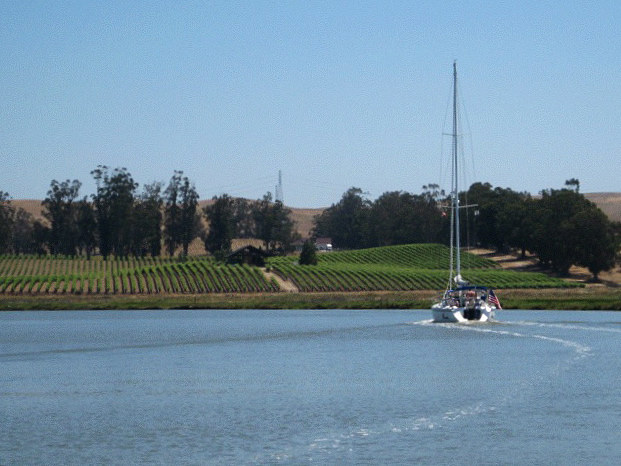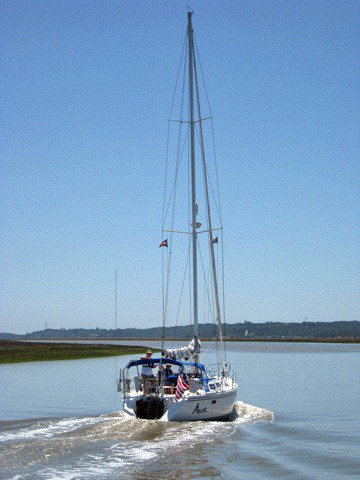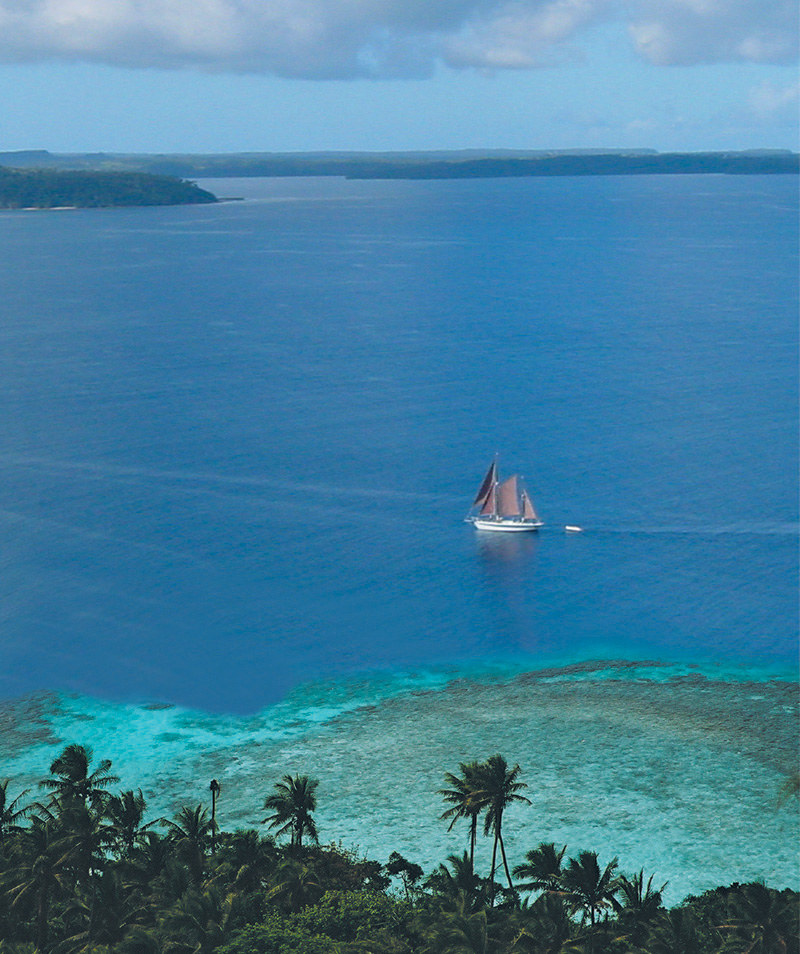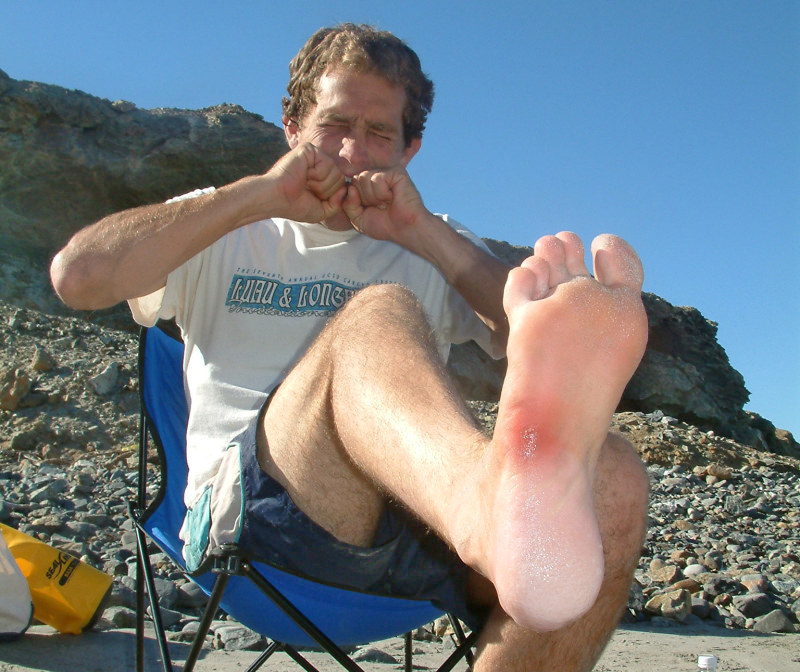
It’s All Good in Petaluma

We have made annual trips from Alameda to the Petaluma Turning Basin aboard our Catalina 42 Azure for the last several years. The information you were given by the Petaluma Visitor Center is correct — the locking gates have made a world of difference on the docks at night. Before they were installed, groups of bored teenagers congregated at the far end of the dock (below the yacht club) to hang out. They were never rude to us, but they could get loud late at night. A friend once found trash left on his deck, and we often noted fresh graffiti written and carved onto the wooden dock. We never experienced any theft or vandalism. Despite the minor annoyances, we still found Petaluma to be a charming place to visit.
Now, with the locking gates operational, the major hazard facing visiting boaters at the Turning Basin is forgetting the security code after drinking too much wine in one (or more!) of the many fantastic restaurants ashore. The Visitor Center’s information package is terrific and includes suggestions for local dining and activities. The packet also includes a chart of the turning basin, including depth soundings (there are some very shallow spots).

Editorial Note: We’ve received nothing but positive feedback from our request in Monday‘s ‘Lectronic for your experiences in Petaluma, and will be running many of the responses in the September issue of Latitude 38.
First Tonga Regatta Slated for September

©2009 Latitude 38 Media, LLC
By all accounts, the islands of Tonga comprise a fabulous sailing venue. Despite the fact that hundreds of cruising sailors are drawn there every year, there has never been an actual regatta held within the so-called "friendly Kingdom." That is, until now.
Nautical business leaders announced recently that the first annual Regatta Vava’u and Sail Week will be held September 3-8. Staged within the 50-island Vava’u group in the northern region of the Kingdom, the six-day festival will feature "two race events, a food and craft fair, a humpback whale presentation, traditional Tongan feasts, a fantastic Full Moon Party, a pub crawl, a kids’ day and other fun activities, and opportunities to learn about ocean ecology." Sounds like big fun to us — in fact, a must stopover for west-bound cruisers.
As regatta volunteer Lisa Newton explains, the festival also includes a strong environmental component: “We’re also involved in the Vava’u coral gardening programme and it makes sense to combine the two projects — have an ecological focus for the regatta and also raise funds for coral gardening. The people who participate in this event will get to see the wonders that ecologists are so keen to protect, and will hopefully leave Vava’u with great memories, as well as a sense of responsibility for the Pacific Ocean.” See the website for complete program details, and look for a report on this first-time-ever event in an upcoming edition of Latitude 38.
What’s Right for the Bite?

© Latitude 38 Media, LLC
It’s a curious coincidence that we’ve heard reports of painful stings by rare scorpionfish or its relative, the stonefish, from sailors in both the Caribbean and in Mexico. The Mexican incident prompted lively discussions on cruiser blogs about the proper treatment — as opposed to worthless myths — of these and other stinger bites.
When young Josh Morrell was stung in the shallows of the BVI by an unseen creature, his parents instinctively applied ice to counteract the swelling. Turns out that was exactly the wrong thing to do. "You want to apply water as hot as you can stand it," says Dr. Kent Benedict of Santa Cruz. "The same is true for stingray bites." The heat, we’re told, breaks up the harmful elements injected by the stinger.
Jeremy White of the Portland, OR-based GibSea 106 Madeline was unlucky enough to step on a stingray, but fortunately learned about the hot water treatment, which he regards as a "miracle cure."
Pamela Bendall of the Port Hardy, BC-based Kristen 46 Precious Metal tells of a terrible stingray bite last season at La Manzanilla, Mexico. "Finally a local doctor arrived, cleaned the hole, and stuffed mashed papaya (of all things) into the wound. The swelling subsided after three days and continual papaya maintenance. What was important in this treament was to keep the wound open and not bandaged. The healing has to go from inside out, and by covering it, infection and permanent damage to the joint could happen. I was amazed at how quickly he recovered." Apparently it is the papaya’s high content of proteolytic enzymes, especially papain, that make it so effective.
Cruisers headed south this season should also be aware of the simple precaution of shuffling your feet when crossing shallows in order to ‘announce’ your arrival and disperse bottom-dwellers such as rays.
